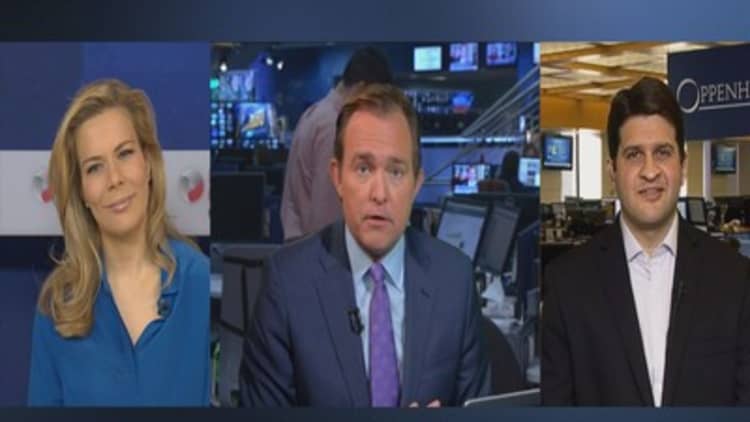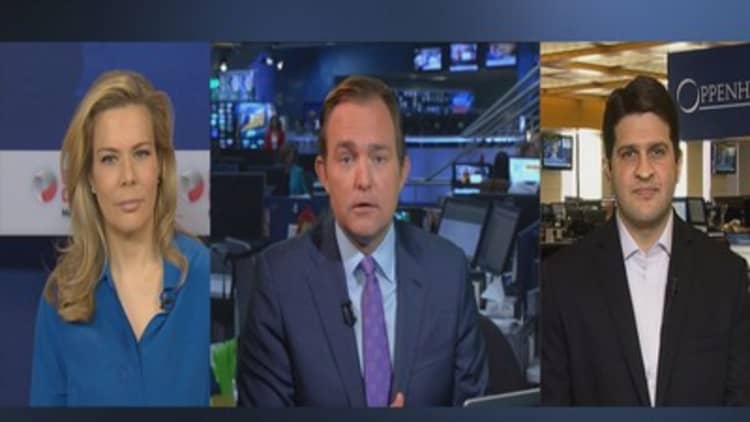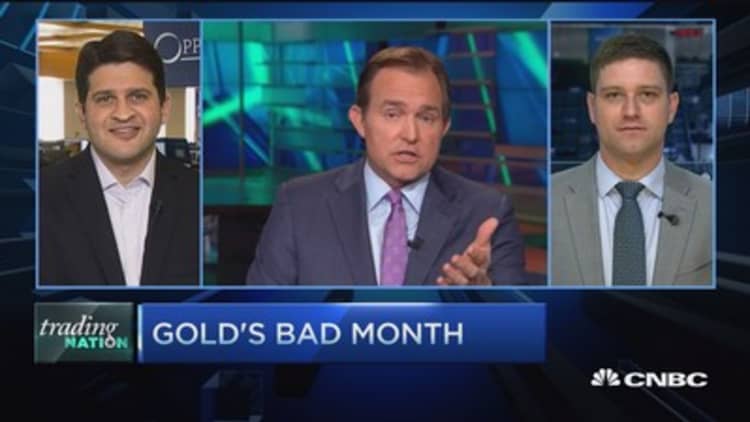


An indicator of default risk is climbing to levels not seen since the last recession, according to credit research from Standard & Poor's. The report recorded the U.S. distress ratio at 20.1 percent in November.
This number, in the report released Monday, is the highest since September 2009, during which the distress ratio was at 23.5 percent. The default rate also increased to 2.71 percent by the end of October.
The distress ratio measures the amount of nervousness in the corporate bond market, and tends to predict the number of future defaults.
More conventional measures of the high-yield bond market also show increasing weakness in so-called "speculative-grade" fixed-income instruments. For instance, the popular high-yield ETF trading under the ticker symbol "HYG" has fallen 8.5 percent in the past six months as stocks have been flat.
As the divergence between the and high-yield bonds widens, Oppenheimer's head of technical analysis Ari Wald said the weakening credit trend is at the top of his list of worries, and could point to more market volatility at the start of 2016.
"When asked by clients what keeps us up at night, this is actually what I first bring up and what gives us concern is that credit in the market is weakening," Wald said Monday on CNBC's "Trading Nation."
The pressure on the high-yield market this year is largely attributable to energy and low oil prices, Wald said. According to the S&P report, oil and gas accounted for the highest number of issues in the distress ratio, and 37 percent of total distressed debt.
"Drops in oil prices affected profitability for oil and gas companies, where spreads have widened considerably, and had a spillover effect to the broader speculative-grade spectrum," S&P managing director Diane Vazza wrote in the report.
Looking at the chart of HYG, Wald said energy may continue to drive junk bonds lower.
"As an overall market hedge, we're telling our clients, avoid, sell, continue to underweight the energy sector," Wald said.
However, while investors may look to the high-yield market for warnings on stocks, Erin Gibbs of S&P Investment Advisory said the drop in high-yield doesn't necessarily translate into trouble for equities.
"A lot of the stocks that have been pulling down the high-yield index have been the very low credit, low-quality junk bonds, versus your S&P 500 that tends to be more investment-grade," she said Monday on "Trading Nation." "In that case I don't see that trickle-down effect."
Investors should also keep in mind the flurry of mergers and acquisitions in the healthcare space, Gibbs said, which have hurt credit quality and the high-yield index, but have helped the S&P 500. The health-care sector is one of the best performers in the S&P year to date, with almost 5 percent gains for the year.
"I think the divergence makes sense when you really delve into it, and I don't see it necessarily having an effect or an impact on equities just yet," she said.
Want to be a part of the Trading Nation? If you'd like to call in to our live Wednesday show, email your name, number and a question to TradingNation@cnbc.com.





